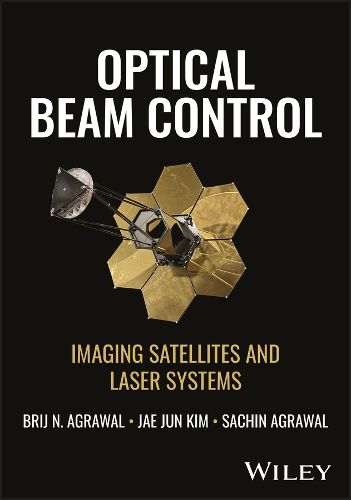Readings Newsletter
Become a Readings Member to make your shopping experience even easier.
Sign in or sign up for free!
You’re not far away from qualifying for FREE standard shipping within Australia
You’ve qualified for FREE standard shipping within Australia
The cart is loading…






The authors have designed this timely new book in response to the need for up-to-date and complete coverage of multi-disciplinary basic principles of optical beam control for imaging satellites and laser systems. As the uses of imaging satellites and laser systems increase, optical beam control for these systems will occupy engineers and scientists for years to come. The book introduces space telescopes, ground telescopes, laser communications, and high energy laser systems, covering light sources, lenses, wave optics, diffraction, and polarization, as well as fine pointing control, classical control, modern control, Kalman filters, sensors, actuators, flexible control, slew maneuvers, and acquisition, tracking, and pointing.
The authors have over 30 years' experience in research, development, and testing of complex state-of-art systems, such as 3-meter diameter segmented mirror space telescopes and high energy laser beam control systems.
As a text and reference dealing with basics of optical beam control, this book includes information on:
Sources of aberrations, vibration and jitter, optical aberrations, air turbulence, and measure of optical aberrations Vibration isolation and jitter control, active jitter control, strap down, and inertial stable platform Adaptive optics, wavefront sensors, wavefront reconstruction, adaptive optics configurations, and control systems Imaging satellites, telescope design, optical train components, image aberration, and performance analysis Laser beam control hardware, laser aberration, and laser performance analysis
Optical Beam Control is an essential reference for engineers working in imaging satellites and laser systems along with electrical engineers focused on optics, satellites, lasers, and control systems. The text is also valuable for students taking courses on laser technology, satellite control, spacecraft design, and optics and photonics.
$9.00 standard shipping within Australia
FREE standard shipping within Australia for orders over $100.00
Express & International shipping calculated at checkout
The authors have designed this timely new book in response to the need for up-to-date and complete coverage of multi-disciplinary basic principles of optical beam control for imaging satellites and laser systems. As the uses of imaging satellites and laser systems increase, optical beam control for these systems will occupy engineers and scientists for years to come. The book introduces space telescopes, ground telescopes, laser communications, and high energy laser systems, covering light sources, lenses, wave optics, diffraction, and polarization, as well as fine pointing control, classical control, modern control, Kalman filters, sensors, actuators, flexible control, slew maneuvers, and acquisition, tracking, and pointing.
The authors have over 30 years' experience in research, development, and testing of complex state-of-art systems, such as 3-meter diameter segmented mirror space telescopes and high energy laser beam control systems.
As a text and reference dealing with basics of optical beam control, this book includes information on:
Sources of aberrations, vibration and jitter, optical aberrations, air turbulence, and measure of optical aberrations Vibration isolation and jitter control, active jitter control, strap down, and inertial stable platform Adaptive optics, wavefront sensors, wavefront reconstruction, adaptive optics configurations, and control systems Imaging satellites, telescope design, optical train components, image aberration, and performance analysis Laser beam control hardware, laser aberration, and laser performance analysis
Optical Beam Control is an essential reference for engineers working in imaging satellites and laser systems along with electrical engineers focused on optics, satellites, lasers, and control systems. The text is also valuable for students taking courses on laser technology, satellite control, spacecraft design, and optics and photonics.